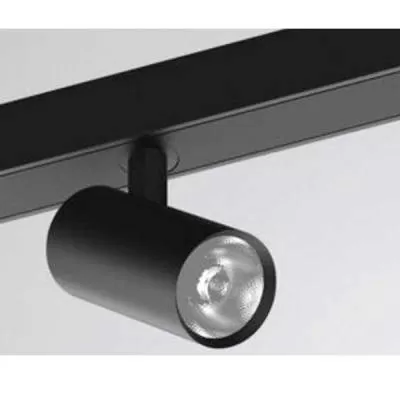Scout for Grout
It was a mission for the engineering fraternity: the search for a construction material that would work as a viable solution for repair works. It would have to be superior to concrete, fulfilling a wide range of requirements in both a fresh and hardened state; plus, it would need to offer strength and durability along with the ability to perform
.
This mission, fortunately, was possible! Rapid development in technology paved the way for the manufacture of construction chemicals. In the 1970s, engineers be-gan to use high-strength grout as a construction material compatible for the rep-air of RCC members – it worked, and how! Jayant N Sheth, Proprietor, Struct-Mast Engineers, can attest to this. With 25 years of experience in restorations, ret-rofitting and major repairs of marine str-uctures, high-rise buildings, foundations, and much more, he has used grout in his projects for over 20 years. Highlighting his experience with high-strength compacting material in the most cost-effective manner, this dedicated engineer tells SHRIYAL SETHUMADHAVAN why the industry must adopt grout....
Flowing cement
Loosely, it is called grout because it comprises fine aggregates; had these been coarse aggregates, it could have been used as mortar or concrete. So, self-compacting grout is flowing cement comp-rising a small mesh size aggregate mixture with plasticiser that consolidates under its own weight. It is shrinkage compensated, carefully graded with fine sand, has low porosity, high bond strength, high early strength, chloride and is iron free. The highly fluid nature of this material makes it suitable for repair works in difficult conditions and sections with congested reinforcement. Grout can be extensively used where concrete is not able to flow/perform owing to space constraints, congestion or where it cannot be vibrated/compacted.
Tracing its beginning
At Struct-Mast, we started using the material for our works in 1986. Prior to that, say in the 1960s, grout was used as a material for mechanical purposes like grouting machines, foundations, bolts and base plates. But with time, its properties for construction were recognised, and today, grout is used as a repair material in civil construction works. In the US, it has been recognised for its construction properties since the 1970s; India adopted it in the 80s. When I started using this material, research was restricted to literature, papers published, international seminars, and the information received from ASTM International and American Concrete Institute. Then, there was a phase, say from the 1990s to 2000, where people
doubted its usage. Because of its liquid feel and the particle size being less than 2.5 mm, there were apprehensions. But,
as time passed, and with firsthand experience, grout and its uses began to gain recognition.
For best results
Engineers prefer using grout because of its self-compacting property. In my experience, I believe grout can be poured to a maximum of 600 mm. It is important to study the behaviour of the flow of the material and realise its usage accordingly. Current studies of grout focus on the use of rheometers to understand the flow behaviour of cement paste and mortar. Also, mixture proportioning methods for grout is another area of study. Researchers are trying to determine the characterisation of this material using laboratory test met-hods, its durability and hardened properties compared to normal concrete and related construction issues. In addition, certain other issues also need attention from a long-term perspective. These include developing a mixture design guideline table similar to that for normal concrete; a shift to more 'normal' powder content from the existing high powder mixtures; better understanding of the problems of autogenous and plastic shrinkage; and development of site quality control parameters such as 'all-in-one' acceptance tests.
Within the material
Mixture proportions for grout differ from those of ordinary concrete, in that, the former has more powder content and less coarse aggregate. Hence, quartz sand with gap grading is used for grout. Moreover, grout incorporates high-range water reducers (HRWR, superplasticisers) in larger amounts and a viscosity modifying agent (VMA) in small doses. The HRWR admixture helps achieve excellent flow at low water content and VMA reduces the bleeding and improves the stability of the grout mixture. An effective VMA can also bring down the powder requirements and still give the required stability. Moreover, grout includes a mineral admixture to enhance its deformability and stability. While selecting materials for grout, one needs to consider the amount of marginally unsuitable aggregates; that is, those deviating from ideal shapes and sizes; choice of HRWR and VMA, and the compatibility between cement, HRWR admixture and VMA.
Performance for different exposures
Since 1990, I have been using pre-packed grout successfully to restore the strength of a variety of structures. These include major repairs for beams, columns, shear walls, slabs and other RCC members. Without doubt, this material has given consistent performance owing to its durability. Moreover, grout has been used to restore structures high-rise buildings, industrial structures, jetties/wharfs, underwater structures, bridges, machine foundations subjected to different degrees of exposure. My experience with this material over the years has been excellent and we have restored RCC members without increasing thickness or other dimensions. Grout occupies each and every nook and corner; it flows into areas that concrete does not cover owing to congestion of reinforcement leaving behind hollow/honeycombed structures. But grout has equally performed in small patches to longer len-gths of beam bottoms. The structures repaired with this material have not come under re-repair. Some of these have encountered disasters like earthquakes, and some have been exposed to marine environment; the result is that repaired members are performing as per expectation. If I have to compare grout with similar materials being used in the form of rendering with polymer modified mortars, epoxy mortars and concrete, it has worked and performed better in all these structures.
Is it affordable?
Grout is readily available in the open market. Manufactured by reputed manufacturers, it is ISO approved, available at competitive prices and can be used with ease. In terms of cost, while concrete costs Rs 3 per kg, grout costs about Rs 15. But, in order to use concrete, you have to bring in truckloads of sand and metal as these are not available in small packs (concrete in small packs is almost Rs 6-7 per kg). In comparison, grout is used in small quantities and in totality, if you consider the convenience factor and the total economy involved, it proves to be cheaper.
Experience counts
My experience in various projects has exposed me to the challenges that come with the use of grout. For instance, it is important to know the limit for the flow distance of grout to avoid segregation of aggregate. From what I understand from past works, for distances less than 1.50 m, segregation does not occur. Another issue is that of the lateral pressure that grout has on formworks owing to its highly fluid nature. But, according to me, grout exerts about the same pressure as conventional concrete.
Do not let go!
Since 1990, I have been using high-strength grout for major repairs. In most of my projects, I have had to restore the strength of congested RCC beams and colu-mns, and this material has perfor-med in terms of strength and durability. As civil engineers are deeply committed to the construction ind-ustry, we have to be concerned about global warming. Each const-ituent of concrete cement, sand, water, coarse aggregates and reinforcing bars – is drawn from nat-ure and has a grave impact on the environment. High strength grout will serve to be beneficial in the long term to restore the strength of degenerated RCC members; it can be employed to restore the strength of deficient/ defective new RCC members instead of breaking or demolishing them. This will radically enhance the service life of the structures and in turn reduce the consumption of cement. I have read in depth about grout in literature and journals. Also, have used it in several projects. The motivation was its proper-
ties. I have given you its advantages, uses, versatility. Now, the ball is in your court. I strongly suggest, exp-erience this material, realise its benefits do not let go!
Grout advantage!
•Flows into congested areas or narrow passages and densely fills
cavities/gaps
•High strength in compression, flexure, tension and good bond/adhesion with substrate and steel
•Non-shrinkable
•Available in pre-packed quantity and easy to handle
•Cheaper than polymer or epoxy mortars
•Adheres better to old strata
•Enables faster de-shuttering, resulting in a more repetitions in a
shorter duration
•Can be used as -bridging material to some extent, allows surface
to breathe and increases diffusion resistance
•Facilitates speedy construction and minimises shutdown duration
•With efficient planning, its usage not only cuts time but
reduces cost.
In the eighth in a series of features showcasing building materials, JAYANT N SHETH, Proprietor, Struct-Mast Engineers, talks about high strength grout as a repair material. It was a mission for the engineering fraternity: the search for a construction material that would work as a viable solution for repair works. It would have to be superior to concrete, fulfilling a wide range of requirements in both a fresh and hardened state; plus, it would need to offer strength and durability along with the ability to perform. This mission, fortunately, was possible! Rapid development in technology paved the way for the manufacture of construction chemicals. In the 1970s, engineers be-gan to use high-strength grout as a construction material compatible for the rep-air of RCC members – it worked, and how! Jayant N Sheth, Proprietor, Struct-Mast Engineers, can attest to this. With 25 years of experience in restorations, ret-rofitting and major repairs of marine str-uctures, high-rise buildings, foundations, and much more, he has used grout in his projects for over 20 years. Highlighting his experience with high-strength compacting material in the most cost-effective manner, this dedicated engineer tells SHRIYAL SETHUMADHAVAN why the industry must adopt grout.... Flowing cementLoosely, it is called grout because it comprises fine aggregates; had these been coarse aggregates, it could have been used as mortar or concrete. So, self-compacting grout is flowing cement comp-rising a small mesh size aggregate mixture with plasticiser that consolidates under its own weight. It is shrinkage compensated, carefully graded with fine sand, has low porosity, high bond strength, high early strength, chloride and is iron free. The highly fluid nature of this material makes it suitable for repair works in difficult conditions and sections with congested reinforcement. Grout can be extensively used where concrete is not able to flow/perform owing to space constraints, congestion or where it cannot be vibrated/compacted. Tracing its beginningAt Struct-Mast, we started using the material for our works in 1986. Prior to that, say in the 1960s, grout was used as a material for mechanical purposes like grouting machines, foundations, bolts and base plates. But with time, its properties for construction were recognised, and today, grout is used as a repair material in civil construction works. In the US, it has been recognised for its construction properties since the 1970s; India adopted it in the 80s. When I started using this material, research was restricted to literature, papers published, international seminars, and the information received from ASTM International and American Concrete Institute. Then, there was a phase, say from the 1990s to 2000, where people doubted its usage. Because of its liquid feel and the particle size being less than 2.5 mm, there were apprehensions. But, as time passed, and with firsthand experience, grout and its uses began to gain recognition.For best resultsEngineers prefer using grout because of its self-compacting property. In my experience, I believe grout can be poured to a maximum of 600 mm. It is important to study the behaviour of the flow of the material and realise its usage accordingly. Current studies of grout focus on the use of rheometers to understand the flow behaviour of cement paste and mortar. Also, mixture proportioning methods for grout is another area of study. Researchers are trying to determine the characterisation of this material using laboratory test met-hods, its durability and hardened properties compared to normal concrete and related construction issues. In addition, certain other issues also need attention from a long-term perspective. These include developing a mixture design guideline table similar to that for normal concrete; a shift to more 'normal' powder content from the existing high powder mixtures; better understanding of the problems of autogenous and plastic shrinkage; and development of site quality control parameters such as 'all-in-one' acceptance tests.Within the materialMixture proportions for grout differ from those of ordinary concrete, in that, the former has more powder content and less coarse aggregate. Hence, quartz sand with gap grading is used for grout. Moreover, grout incorporates high-range water reducers (HRWR, superplasticisers) in larger amounts and a viscosity modifying agent (VMA) in small doses. The HRWR admixture helps achieve excellent flow at low water content and VMA reduces the bleeding and improves the stability of the grout mixture. An effective VMA can also bring down the powder requirements and still give the required stability. Moreover, grout includes a mineral admixture to enhance its deformability and stability. While selecting materials for grout, one needs to consider the amount of marginally unsuitable aggregates; that is, those deviating from ideal shapes and sizes; choice of HRWR and VMA, and the compatibility between cement, HRWR admixture and VMA.Performance for different exposuresSince 1990, I have been using pre-packed grout successfully to restore the strength of a variety of structures. These include major repairs for beams, columns, shear walls, slabs and other RCC members. Without doubt, this material has given consistent performance owing to its durability. Moreover, grout has been used to restore structures high-rise buildings, industrial structures, jetties/wharfs, underwater structures, bridges, machine foundations subjected to different degrees of exposure. My experience with this material over the years has been excellent and we have restored RCC members without increasing thickness or other dimensions. Grout occupies each and every nook and corner; it flows into areas that concrete does not cover owing to congestion of reinforcement leaving behind hollow/honeycombed structures. But grout has equally performed in small patches to longer len-gths of beam bottoms. The structures repaired with this material have not come under re-repair. Some of these have encountered disasters like earthquakes, and some have been exposed to marine environment; the result is that repaired members are performing as per expectation. If I have to compare grout with similar materials being used in the form of rendering with polymer modified mortars, epoxy mortars and concrete, it has worked and performed better in all these structures.Is it affordable? Grout is readily available in the open market. Manufactured by reputed manufacturers, it is ISO approved, available at competitive prices and can be used with ease. In terms of cost, while concrete costs Rs 3 per kg, grout costs about Rs 15. But, in order to use concrete, you have to bring in truckloads of sand and metal as these are not available in small packs (concrete in small packs is almost Rs 6-7 per kg). In comparison, grout is used in small quantities and in totality, if you consider the convenience factor and the total economy involved, it proves to be cheaper.Experience countsMy experience in various projects has exposed me to the challenges that come with the use of grout. For instance, it is important to know the limit for the flow distance of grout to avoid segregation of aggregate. From what I understand from past works, for distances less than 1.50 m, segregation does not occur. Another issue is that of the lateral pressure that grout has on formworks owing to its highly fluid nature. But, according to me, grout exerts about the same pressure as conventional concrete.Do not let go! Since 1990, I have been using high-strength grout for major repairs. In most of my projects, I have had to restore the strength of congested RCC beams and colu-mns, and this material has perfor-med in terms of strength and durability. As civil engineers are deeply committed to the construction ind-ustry, we have to be concerned about global warming. Each const-ituent of concrete cement, sand, water, coarse aggregates and reinforcing bars – is drawn from nat-ure and has a grave impact on the environment. High strength grout will serve to be beneficial in the long term to restore the strength of degenerated RCC members; it can be employed to restore the strength of deficient/ defective new RCC members instead of breaking or demolishing them. This will radically enhance the service life of the structures and in turn reduce the consumption of cement. I have read in depth about grout in literature and journals. Also, have used it in several projects. The motivation was its proper-ties. I have given you its advantages, uses, versatility. Now, the ball is in your court. I strongly suggest, exp-erience this material, realise its benefits do not let go!Grout advantage! •Flows into congested areas or narrow passages and densely fills cavities/gaps •High strength in compression, flexure, tension and good bond/adhesion with substrate and steel •Non-shrinkable •Available in pre-packed quantity and easy to handle•Cheaper than polymer or epoxy mortars •Adheres better to old strata •Enables faster de-shuttering, resulting in a more repetitions in a shorter duration •Can be used as -bridging material to some extent, allows surface to breathe and increases diffusion resistance •Facilitates speedy construction and minimises shutdown duration •With efficient planning, its usage not only cuts time but reduces cost.




















